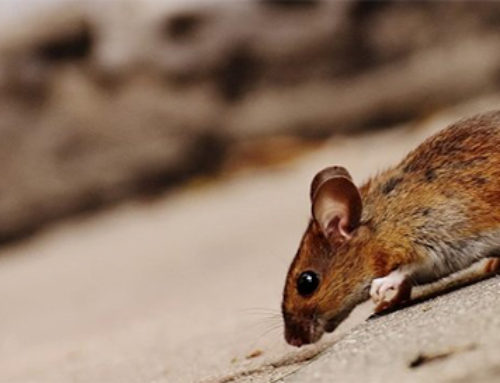 There are a number of different pests that can cause damage to your property, and moles are among the most common vermin that homeowners encounter. Moles are small mammals with short, stubby limbs and smooth, velvety fur that live underground. They have adapted special blood proteins that allow them to survive in the low-oxygen conditions found under the earth, and they are capable of reproducing up to five offspring about once every six weeks. These factors make them adept at destroying lawns and gardens. Here’s how moles can wreak havoc on your yard, and what you can do about it.
There are a number of different pests that can cause damage to your property, and moles are among the most common vermin that homeowners encounter. Moles are small mammals with short, stubby limbs and smooth, velvety fur that live underground. They have adapted special blood proteins that allow them to survive in the low-oxygen conditions found under the earth, and they are capable of reproducing up to five offspring about once every six weeks. These factors make them adept at destroying lawns and gardens. Here’s how moles can wreak havoc on your yard, and what you can do about it.
Keep in mind that a mole is different than a vole, and that moles are carnivorous while voles are a typical rodent and will gnaw on plants. Keep this in mind because it means that a mole and a vole will be attracted to different types of baits. Whiles moles are a problem in Utah, voles are also a problem, especially in North Salt Lake and Farmington.
Carnivorous Burrowers With an Appetite
The good news is that moles are carnivores, so they are more interested in consuming worms and insects than eating your bed of petunias. However, the mole’s preferred method of travel is burrowing underground, and these tunnels can quickly cause the surface of your lawn to bulge in spots. Moles have a ravenous appetite, and some types of mole devour their own body weight (or more) every day. Moles will sometimes come to the surface to search for food, resulting in molehills. These ridges and hills can make your garden look like a war zone.
Solitary Pests That Enter a Mating Frenzy
Moles are generally solitary creatures, so you are not likely to find more than one in your yard at a time. They will, however, use each other’s tunnels to get around. If two male moles meet, they may attack each other quite viciously. Moles generally find one another only to mate. The mating season for most species of mole begins in February and ends in May. The male will let out high-pitched yelps and create new tunnels in an attempt to find a female. The female will generally produce two to five offspring about four to six weeks after mating, depending on the species. The male will stay close to the female during gestation.
Mole pups leave the nest when they are about 30 to 45 days old, reaching sexual maturity about one year later. Thus, it is imperative to take care of a mole infestation as soon as possible.
How Moles Destroy Your Lawn and How to Get Rid of Them
Moles mostly dwell underground, which can make it challenging to get rid of them. Their burrowing activity can destroy plant roots, and some molehills protrude far enough to cause damage to lawnmowers. Most of the harm they cause, however, is aesthetic in nature. Molehills and ridges can make your lawn look unkempt.
The Farmer’s Almanac suggests a number of different products and strategies that can rid a lawn of moles. Moles eat insects and grubs. To rid your lawn of grubs, use a lawn spray containing beneficial nematodes or milky spore disease. You can also drench mole tunnels in a mixture of water, dish detergent and castor oil (3 parts castor oil, 1
part detergent—pour 4 tablespoons into a gallon of water). Moles hate the taste of castor oil, so this mixture will send them elsewhere for food. Attempting to flood a molehill with water is not recommended—moles often have a deep and extensive network of tunnels, and flooding them would require a significant volume of water. Finally, if
nothing else works, you can set up an underground mole trap in a tunnel.
Nothing ruins your lawn faster than a mole infestation. Their aggressive burrowing behavior and mating habits make them a special kind of nuisance. If moles are destroying your lawn or garden, a lawn spray or castor oil mixture can drive them away. If all else fails, contact your local Utah pest control company for professional assistance.




